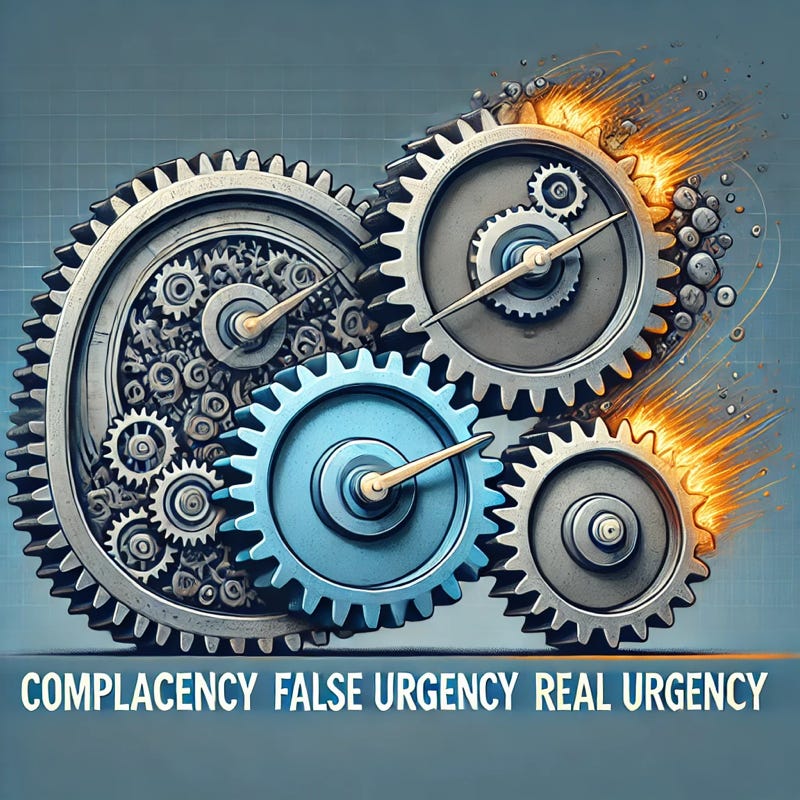How to Create Real Urgency Without Causing Chaos
or "GO! GO! GO! vs. 'Slow is smooth, smooth is fast!'
CEOs love to talk about urgency. We push their teams to move faster, execute quicker, and stop wasting time. Get me that deliverable faster. Answer that client email in minutes! Respond to my Slack immediately!
And they’re not wrong—real urgency is critical to winning.
The problem? Too often, when CEOs try to instill urgency in their teams, it gets translated into fear and chaos instead of focused execution.
Founders and CEOs often have a real sense of urgency because they see the vision so clearly. They know what’s at stake, they feel the weight of responsibility, and they understand the cost of inaction. Their urgency isn’t about panic—it’s about clarity.
True urgency comes from seeing the stakes clearly, feeling personal ownership, and being so excited about the opportunity that you can’t wait to capture it. When a CEO operates with real urgency, they move with purpose—not just speed.
But here’s where it falls apart:
Complacency = “Things are fine.” No real drive for change.
False urgency = Panic, chaos, and reaction. It looks like urgency—meetings, Slack messages, late nights—but it’s just noise.
Real urgency = Clarity, focus, and momentum. Moving fast in the right direction, for the right reasons.
This is where things get tricky. When a CEO tries to push urgency onto a team, it often feels like pressure and fear instead of clarity and opportunity.
A CEO sees the market shifting and needs the team to act fast. They tell everyone, “We’re running out of time! We have to move NOW!” Suddenly, teams are scrambling, stress levels spike, and people start covering their asses instead of executing.
This isn’t urgency. It’s false urgency. The team isn’t focused on winning—they’re just trying not to lose.
If you’re a CEO or leader trying to build urgency, ask yourself:
Are you leading with clarity or just demanding faster activity?
Does your team see the opportunity, or just feel the pressure?
Are they running toward something exciting, or running away from failure?
Urgency isn’t about scaring people into action or demanding more. It’s about helping them see what you see. It’s about making the mission so clear and compelling that people feel personally responsible for making it happen.
Because the truth is, people don’t move fast because they’re scared. They move fast because they believe.
###

